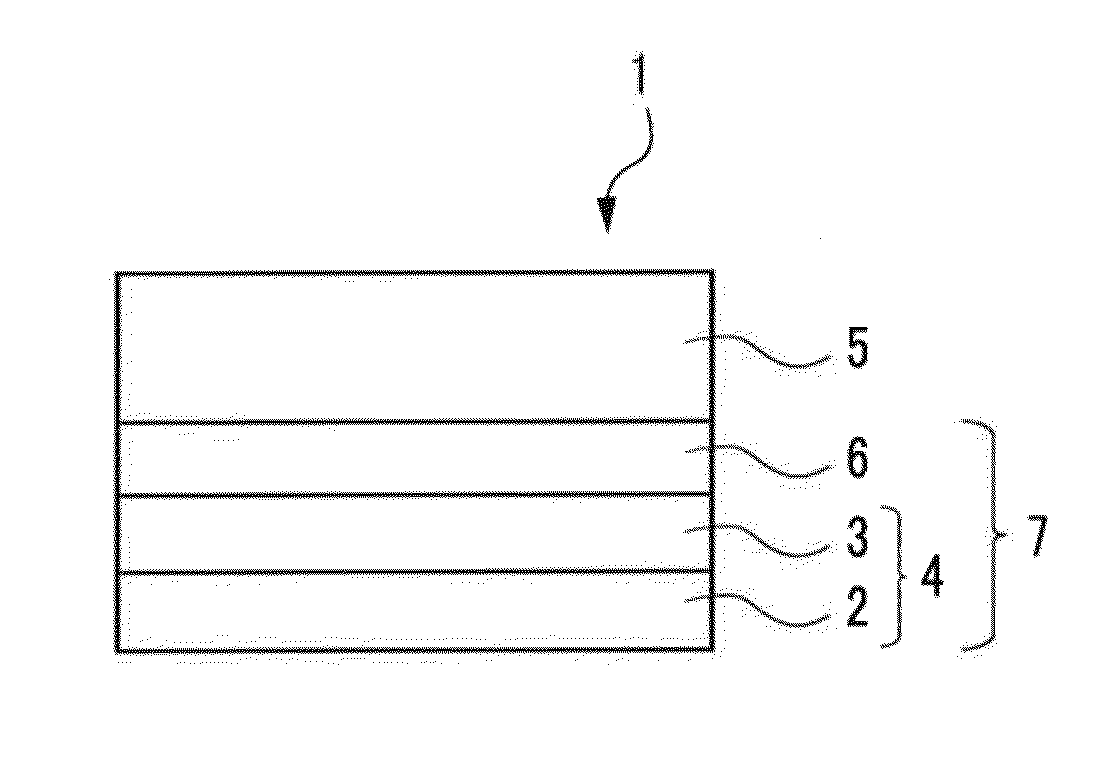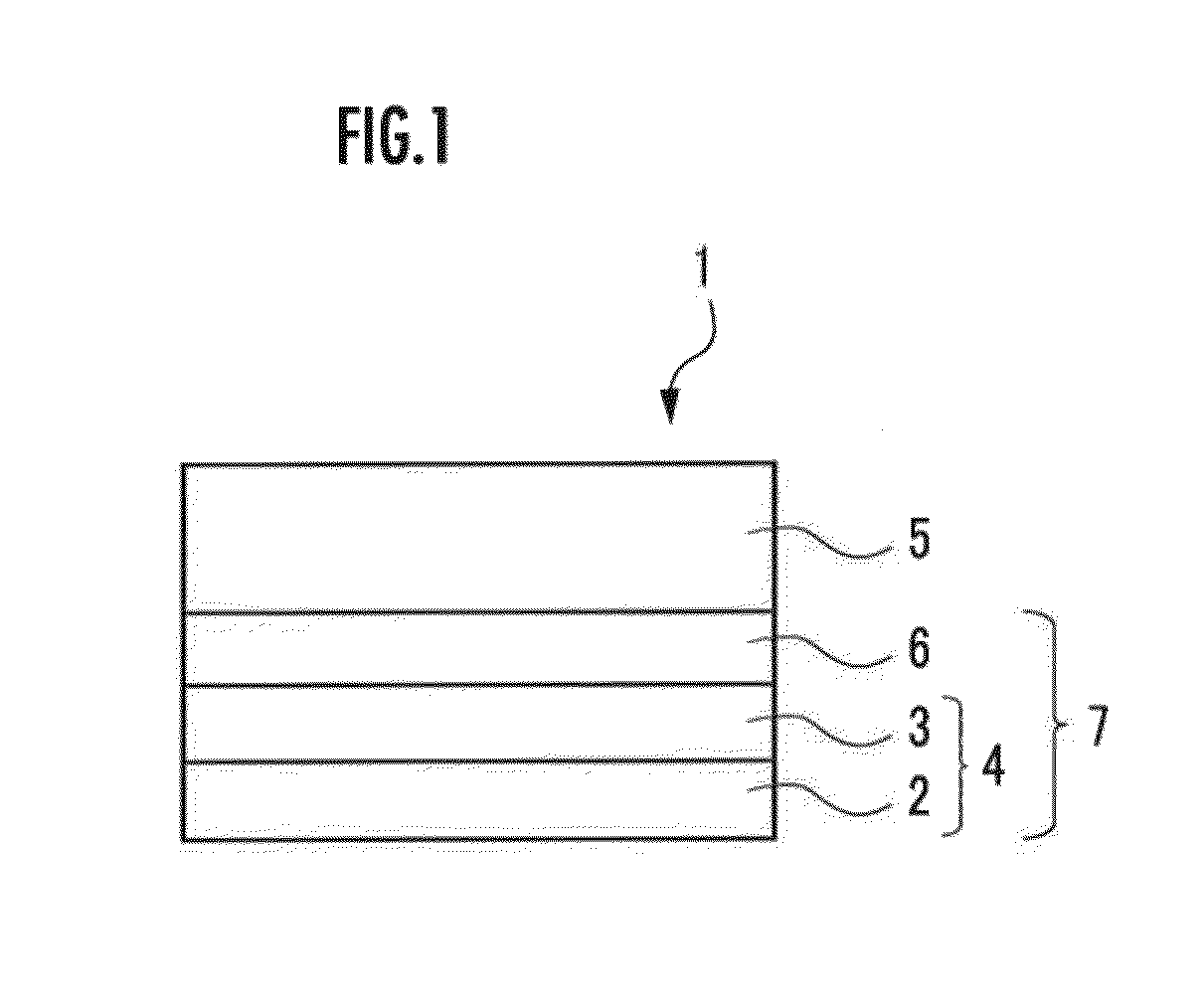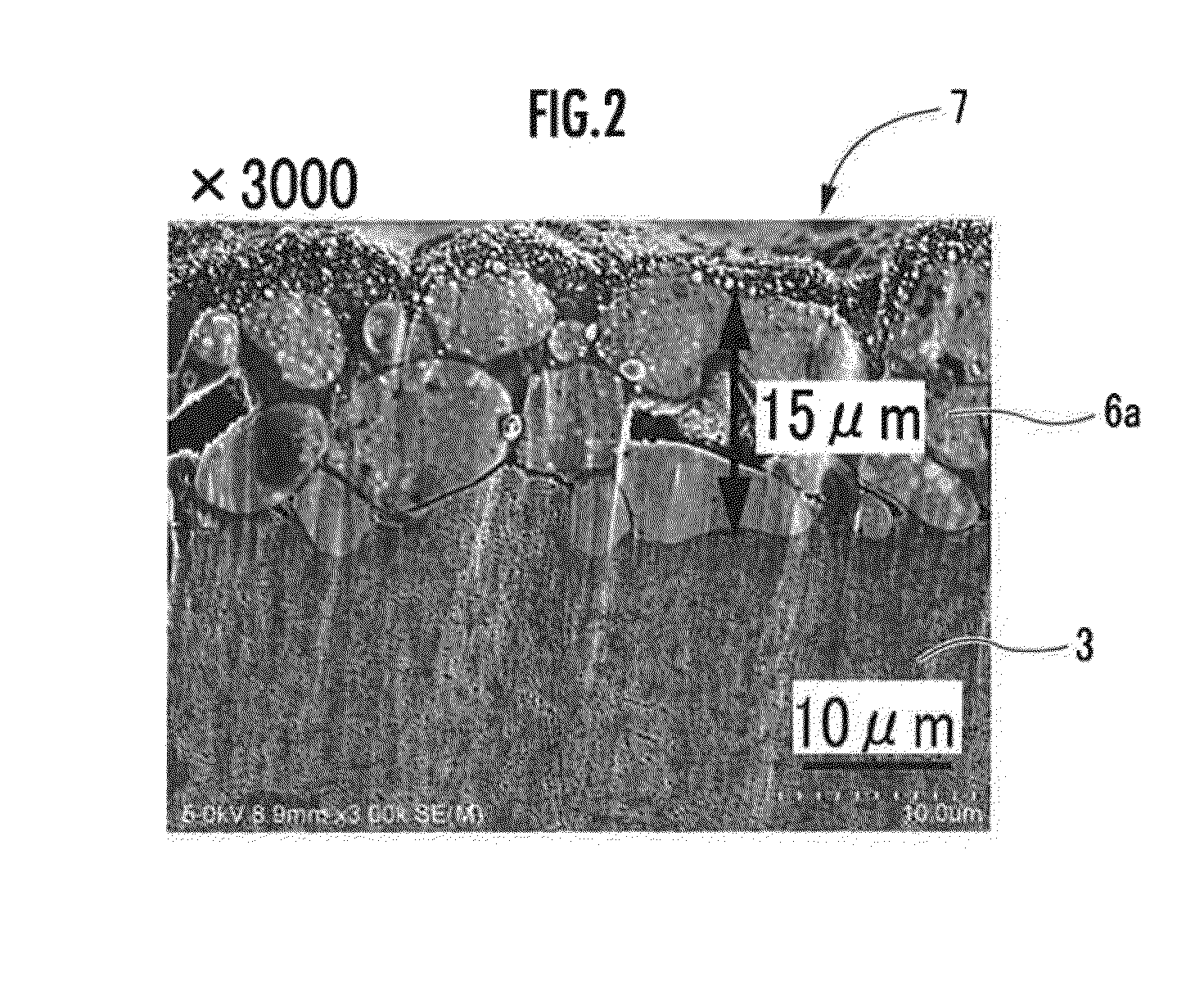Electrolyte-positive electrode structure, and lithium ion secondary battery comprising the same
- Summary
- Abstract
- Description
- Claims
- Application Information
AI Technical Summary
Benefits of technology
Problems solved by technology
Method used
Image
Examples
example 1
1. Production of Lithium Ion Secondary Battery
[0071](1) Preparation of Inorganic Particles
[0072]In this Example, lithium hydroxide monohydrate was first subjected to dehydration treatment by heating at a temperature of 350° C. for 6 hours in a vacuum atmosphere to thereby obtain lithium hydroxide anhydride. Further, lanthanum oxide was subjected to dehydration and decarboxylation treatment by heating at a temperature of 950° C. for 24 hours in the atmospheric air.
[0073]Next, the resulting lithium hydroxide anhydride, the dehydrated and decarboxylated lanthanum oxide, and zirconium oxide were mixed in a molar ratio of Li:La:Zr=7.7:3:2 and ground and mixed for 3 hours at a number of revolutions of 360 rpm using a planetary ball mill to obtain a mixed raw material.
[0074]The resulting mixed raw material was received in an alumina crucible and subjected to primary firing by holding at a temperature of 900° C. for 6 hours in the atmospheric air to thereby obtain a powdered primary fired m...
example 2 to example 8
1. Production of Lithium Ion Battery
[0095]Next, lithium ion secondary batteries 1 were produced as Examples 2 to 8 by using pulverized inorganic particles and changing raw materials of the gel precursor solution to be impregnated into the joined body 7a.
[0096]First, inorganic particles made of a composite metal oxide which is represented by the chemical formula Li7La3Zr2O12 and has a garnet structure were prepared by exactly the same method as in Example 1. The resulting inorganic particles had an average particle size of 8.5 μm.
[0097]Next, the resulting inorganic particles were ground in the following procedures to obtain pulverized inorganic particles.
[0098]First, non-pulverized inorganic particles and isopropyl alcohol were mixed in a mass ratio of 30:70 to obtain a mixture containing non-pulverized inorganic particles. Next, the mixture containing the non-pulverized inorganic particles was subjected to grinding treatment for 45 minutes using zirconia beads having a diameter of ...
example 9 to example 11
1. Production of Lithium Ion Battery
[0122]Next, in Examples 9 to 11, lithium ion secondary batteries 1 were produced in exactly the same manner as in Example 2 except that inorganic particles having different compositions were used.
[0123]In Example 9, dehydrated and decarboxylated lanthanum oxide, lithium carbonate, zirconium oxide, yttrium oxide, and tantalum oxide were first mixed in a molar ratio of Li:La:Y:Zr:Ta=7.7:2.95:0.05:1.8:0.2 and ground and mixed for 3 hours at a number of revolutions of 360 rpm using a planetary ball mill to obtain a mixed raw material. The lanthanum oxide was subjected to dehydration and decarboxylation by heating at a temperature of 950° C. for 24 hours in the atmospheric air.
[0124]Next, the resulting mixed raw material was received in an alumina crucible and subjected to primary firing by holding at a temperature of 900° C. for 6 hours in the atmospheric air to thereby obtain a powdered primary fired material.
[0125]Next, the resulting primary fired m...
PUM
 Login to View More
Login to View More Abstract
Description
Claims
Application Information
 Login to View More
Login to View More - R&D
- Intellectual Property
- Life Sciences
- Materials
- Tech Scout
- Unparalleled Data Quality
- Higher Quality Content
- 60% Fewer Hallucinations
Browse by: Latest US Patents, China's latest patents, Technical Efficacy Thesaurus, Application Domain, Technology Topic, Popular Technical Reports.
© 2025 PatSnap. All rights reserved.Legal|Privacy policy|Modern Slavery Act Transparency Statement|Sitemap|About US| Contact US: help@patsnap.com



